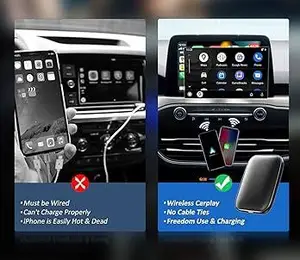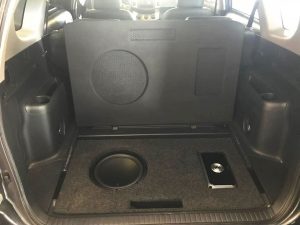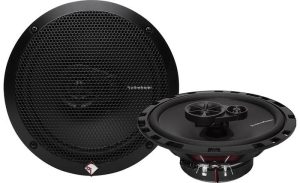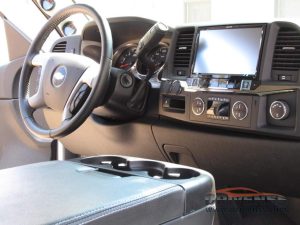Can I Use Android Auto Wirelessly? Yes, you absolutely can! As a proud user of Android Auto wirelessly, I can attest to the convenience and freedom it brings to the driving experience. Gone are the days of fumbling with cables and connectors—now, with wireless Android Auto, connecting your smartphone to your car’s infotainment system is easier and more seamless than ever before.
Contents
What is Android Auto?
For those who may be unfamiliar, Android Auto is a versatile platform developed by Google that allows users to mirror select features and apps from their Android smartphones onto the dashboard display of their cars. Its primary purpose is to provide a safer and more convenient way to access essential features like navigation, music, messaging, and more while on the road. By incorporating with your car’s infotainment system, Android Auto helps minimize distractions and keep your focus where it belongs—on the road ahead.
Wireless Android Auto: A Game-Changer
The introduction of wireless connectivity to Android Auto has been a game-changer for many users, myself included. With wireless Android Auto, there’s no need to fuss with USB cables or worry about compatibility issues. Simply hop into your car, and your smartphone seamlessly connects to your car’s infotainment system, allowing you to access all your favorite apps and features with ease.
Setting Up Wireless Android Auto
Setting up wireless Android Auto is a breeze, but it’s essential to ensure that both your smartphone and your car’s infotainment system meet the necessary requirements. Typically, you’ll need a compatible smartphone running Android 9.0 or higher and a car with built-in support for wireless Android Auto. Some vehicles may require a software update or additional accessories to enable wireless functionality, so be sure to check with your car manufacturer for specific instructions.
Once you’ve confirmed compatibility, the setup process is straightforward. Simply enable Bluetooth and Wi-Fi on your smartphone, pair it with your car’s infotainment system, and follow the on-screen prompts to connect to wireless Android Auto. Within minutes, you’ll be ready to hit the road and enjoy the convenience of wireless connectivity.
My Experience with Wireless Android Auto
As someone who relies on Android Auto daily, making the switch to wireless connectivity has been a game-changer. Gone are the days of dealing with tangled cables and limited flexibility—now, I can seamlessly connect my smartphone to my car’s infotainment system with just a few taps, allowing me to access all my favorite apps and features without any hassle.

One of the standout benefits of wireless Android Auto is the sheer convenience it offers. Whether I’m running errands around town or embarking on a road trip, I can effortlessly access navigation, music, messaging, and more—all without taking my eyes off the road or fumbling with cables. Plus, with wireless connectivity, there’s no need to worry about my phone’s battery running low, as it charges wirelessly while connected to the car.
Of course, like any technology, wireless Android Auto isn’t without its limitations. Connectivity issues can occasionally arise, particularly in areas with poor Wi-Fi or Bluetooth signal strength. Additionally, not all smartphones and car models support wireless Android Auto, so it’s essential to check compatibility before making the switch.
Compatibility and Limitations
When it comes to compatibility, it’s essential to ensure that both your smartphone and your car’s infotainment system support wireless Android Auto. While many newer smartphones and vehicles offer built-in support for wireless connectivity, some older models may require a software update or additional accessories to enable this functionality.
It’s also worth noting that while wireless Android Auto offers many benefits, it may not provide the same level of functionality as a wired connection. Some features, such as voice commands and app integration, may be limited or unavailable when using wireless connectivity. However, for most users, the convenience and flexibility of wireless Android Auto more than make up for any minor drawbacks.
Advantages of Wireless Android Auto
Despite any limitations, the advantages of using Android Auto wirelessly are undeniable. From the convenience of wireless connectivity to the enhanced safety and usability it provides, wireless Android Auto offers a host of benefits for drivers everywhere. By seamlessly integrating your smartphone with your car’s infotainment system, wireless Android Auto allows you to stay connected and entertained while keeping your focus on the road ahead.
Tips for Optimizing Wireless Android Auto
To get the most out of wireless Android Auto, here are a few tips for optimizing performance:
- Ensure that your smartphone and car’s infotainment system are running the latest software updates.
- Keep your smartphone charged to ensure uninterrupted connectivity during your drive.
- Minimize background apps and processes on your smartphone to improve performance.
- If you encounter connectivity issues, try restarting your smartphone or car’s infotainment system to reset the connection.
- If possible, try to maintain a strong Wi-Fi and Bluetooth signal to prevent interruptions during use.
By following these tips, you can help ensure a smooth and seamless experience with wireless Android Auto.
Conclusion
In conclusion, the answer to the question, “Can I Use Android Auto Wirelessly?” is a resounding yes. As a user of Android Auto wirelessly, I can attest to the convenience and freedom it brings to the driving experience. By seamlessly integrating your smartphone with your car’s infotainment system, wireless Android Auto allows you to stay connected and entertained while keeping your focus on the road ahead. Despite any limitations, the benefits of wireless Android Auto far outweigh any minor drawbacks, making it a must-have feature for drivers everywhere. So if you haven’t already, I encourage you to explore the world of wireless Android Auto and discover a safer, more convenient way to stay connected on the road.






